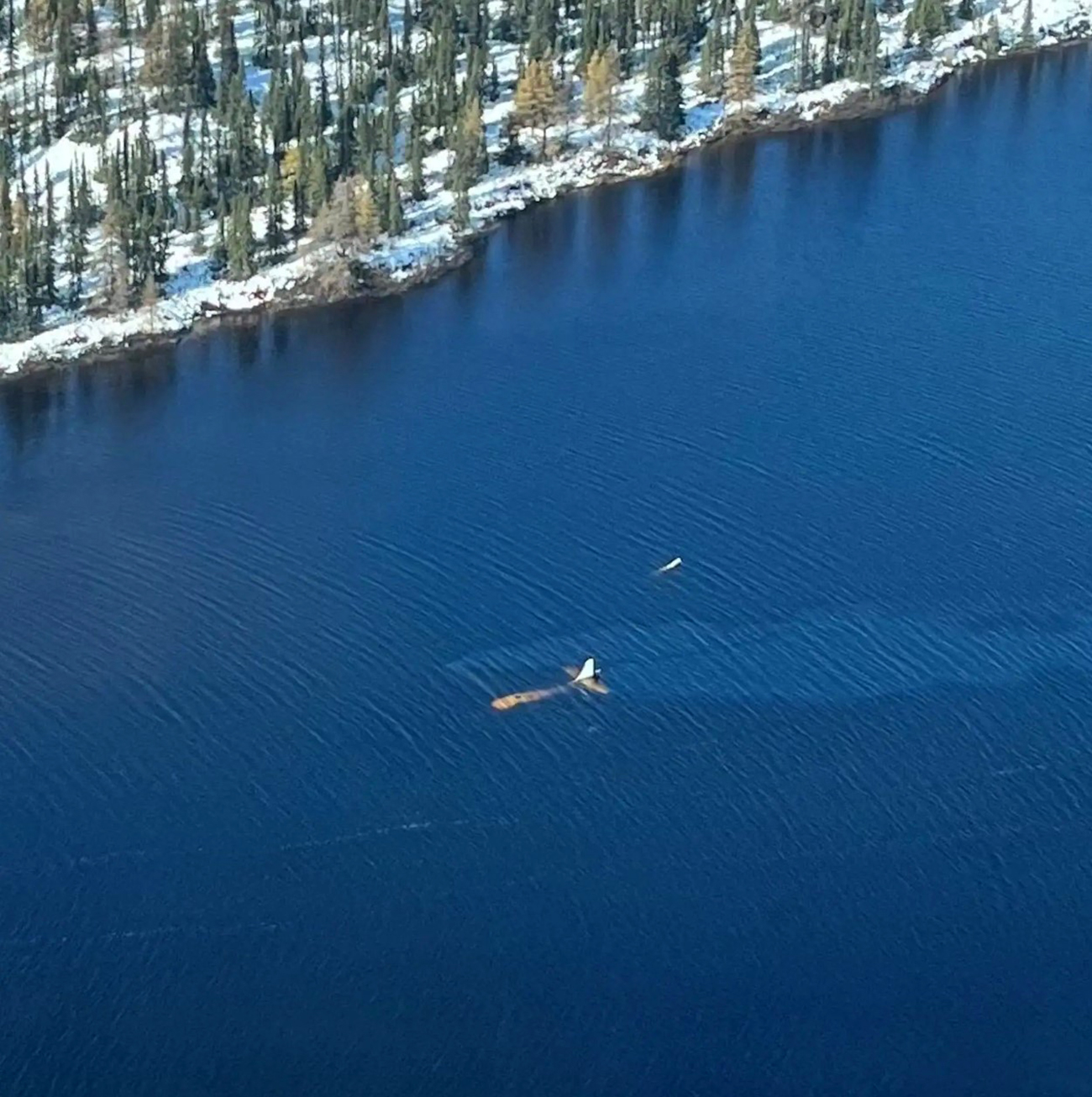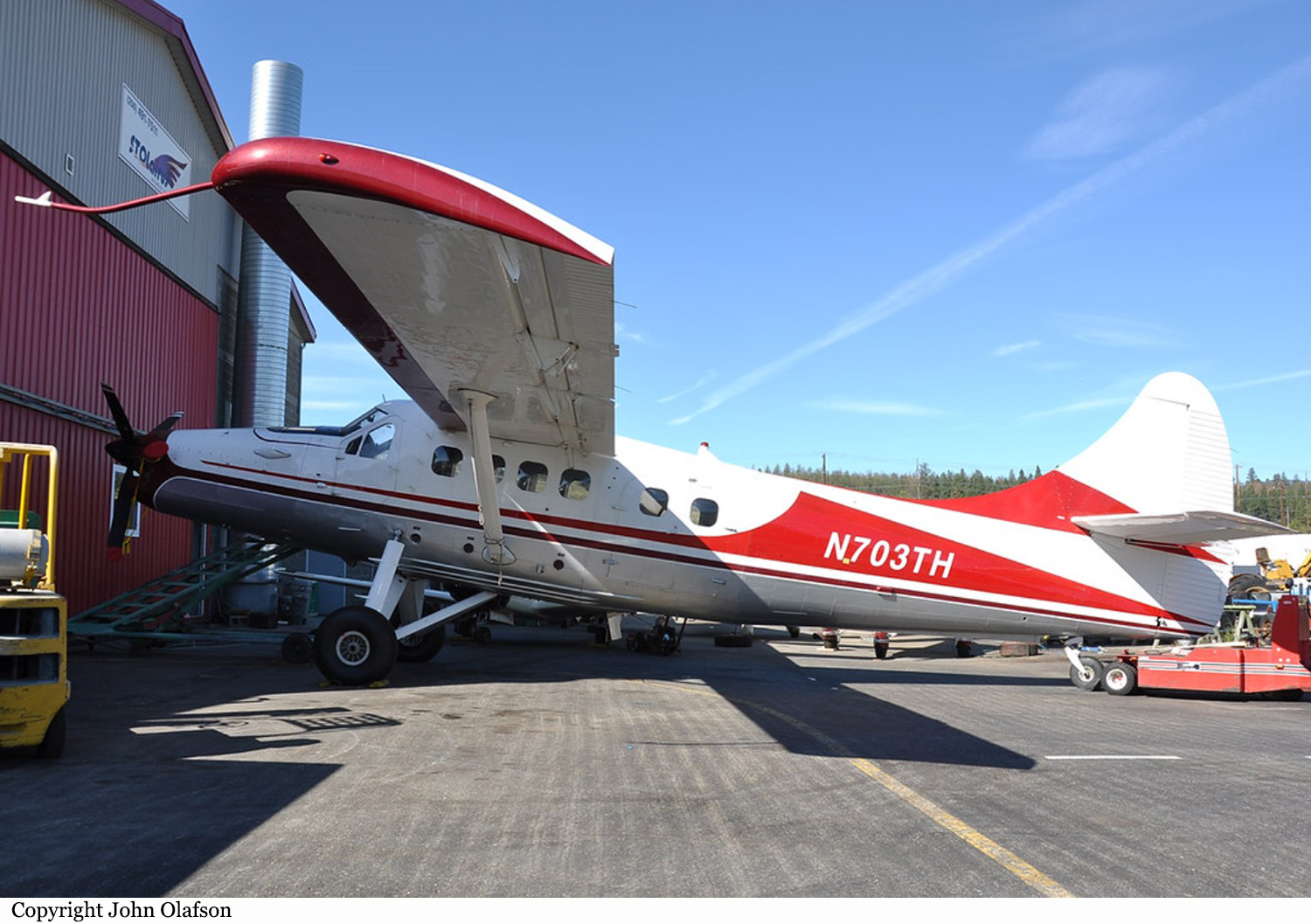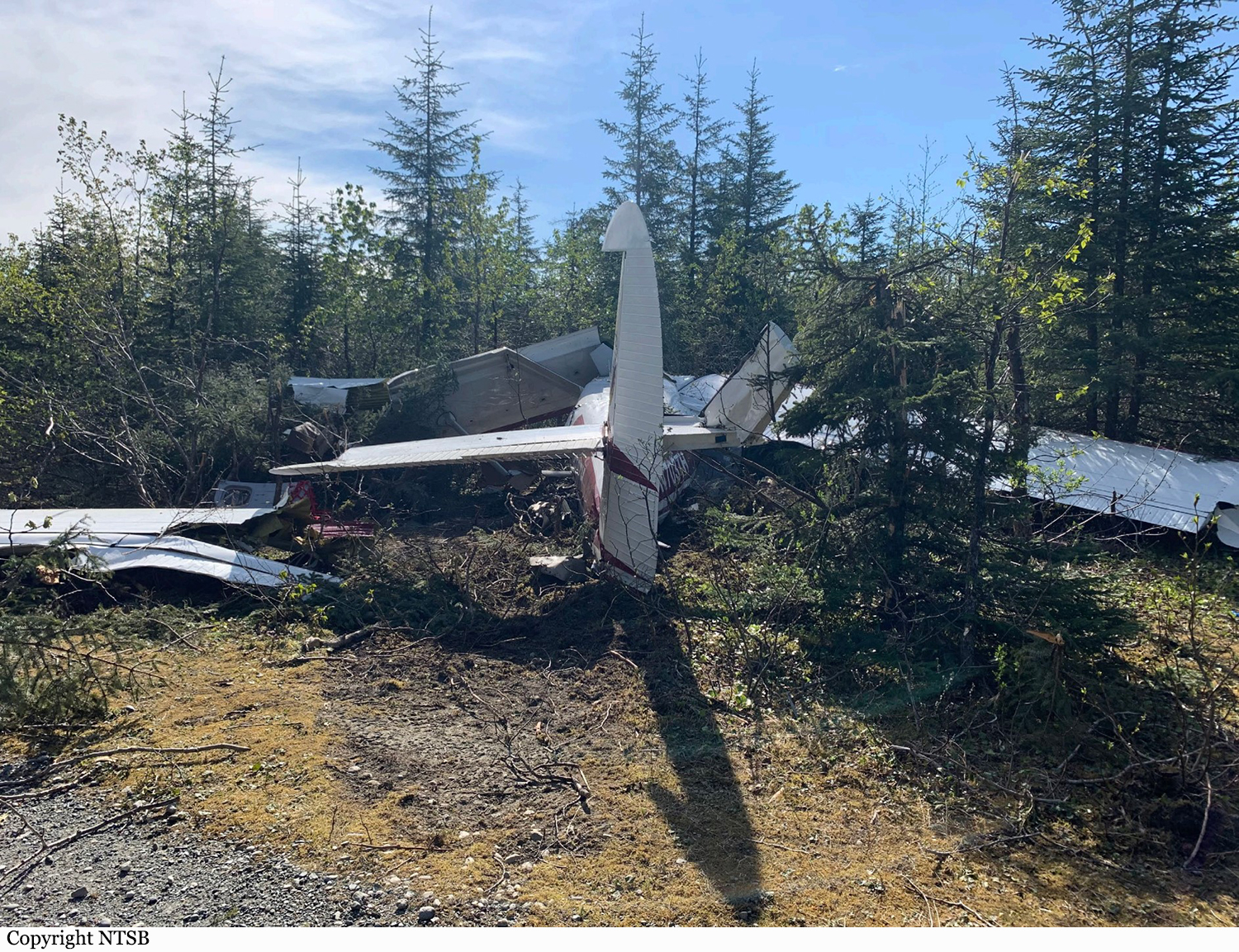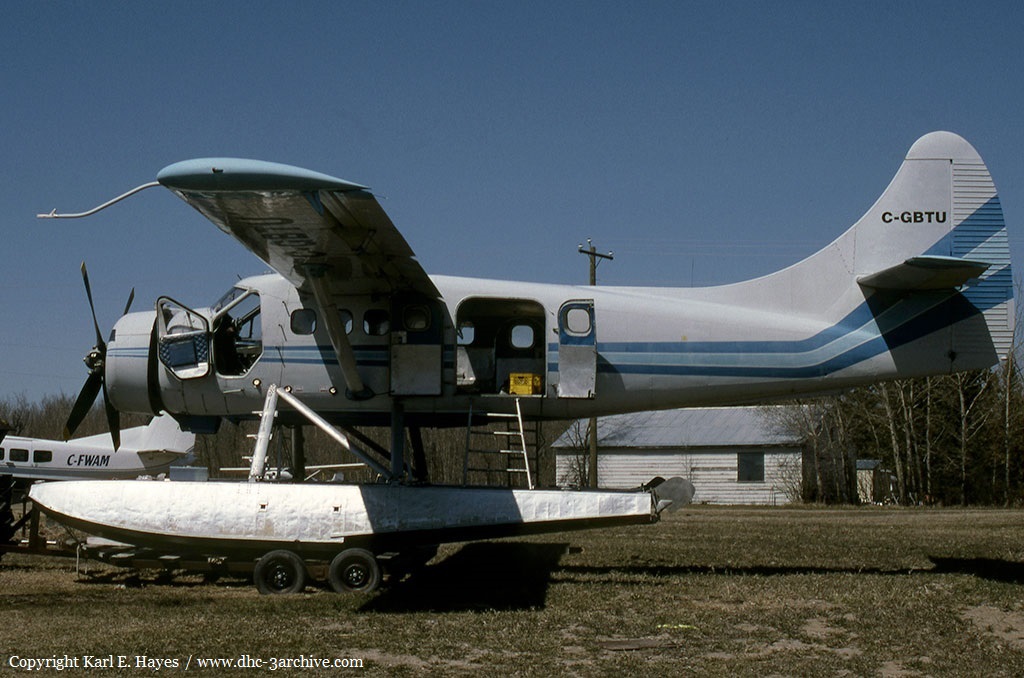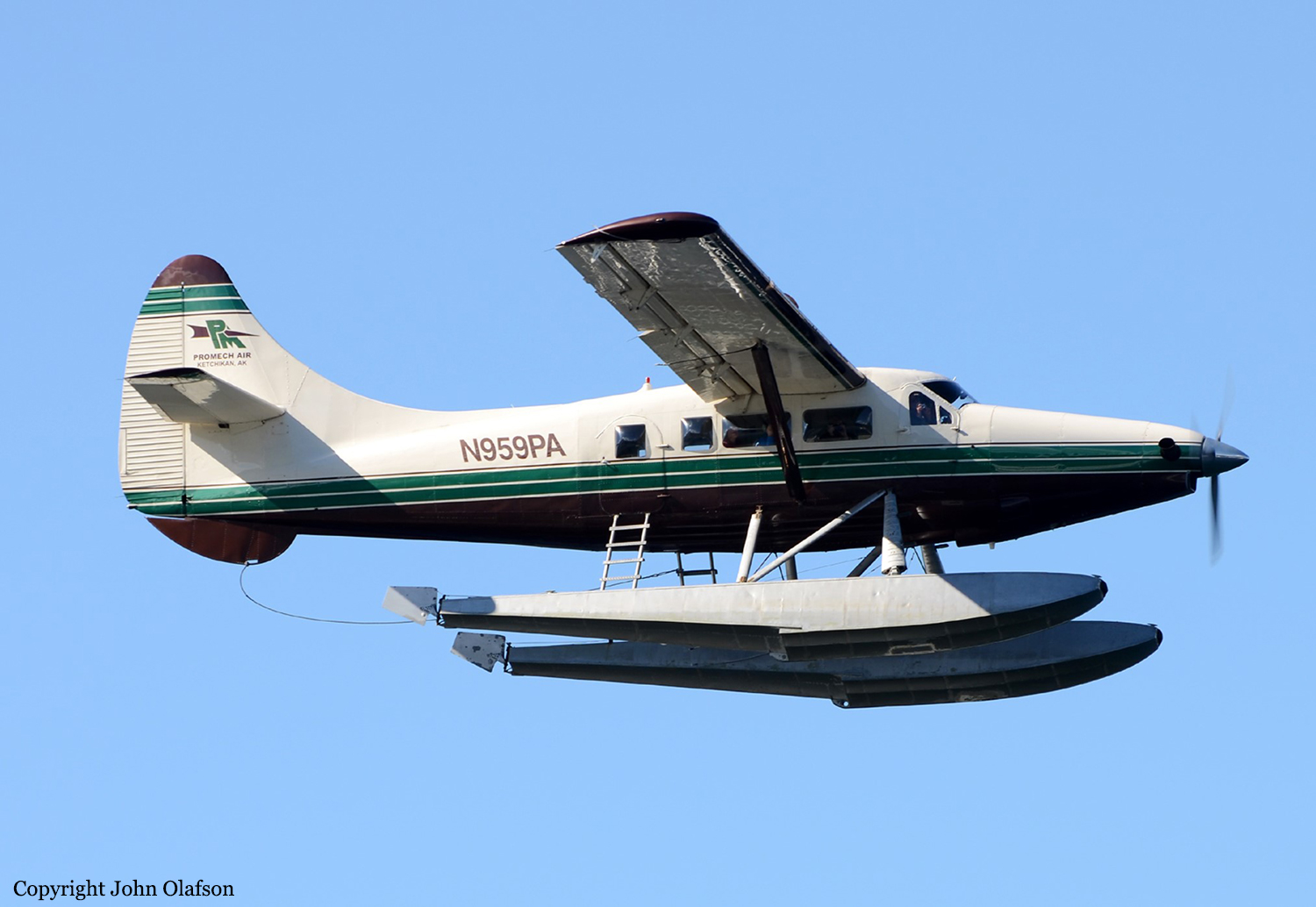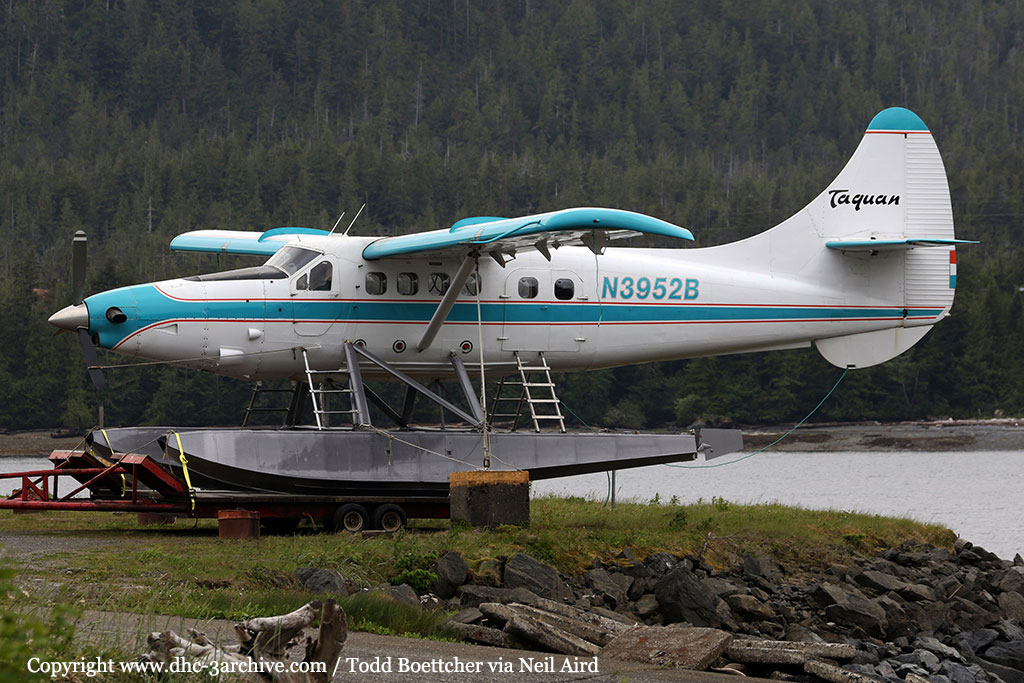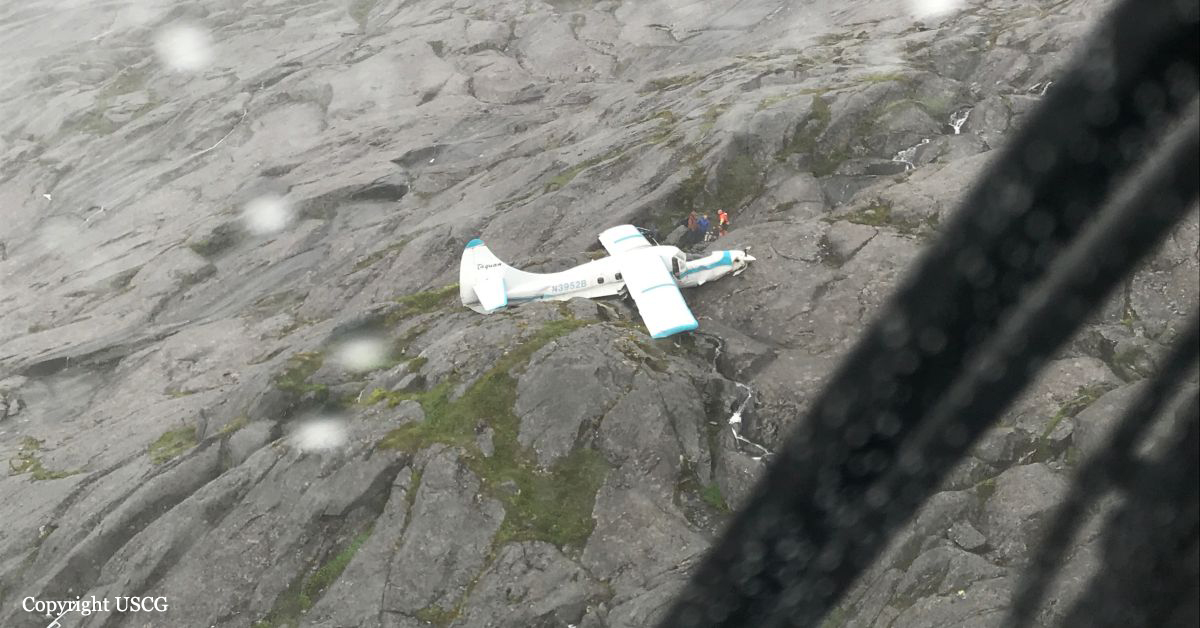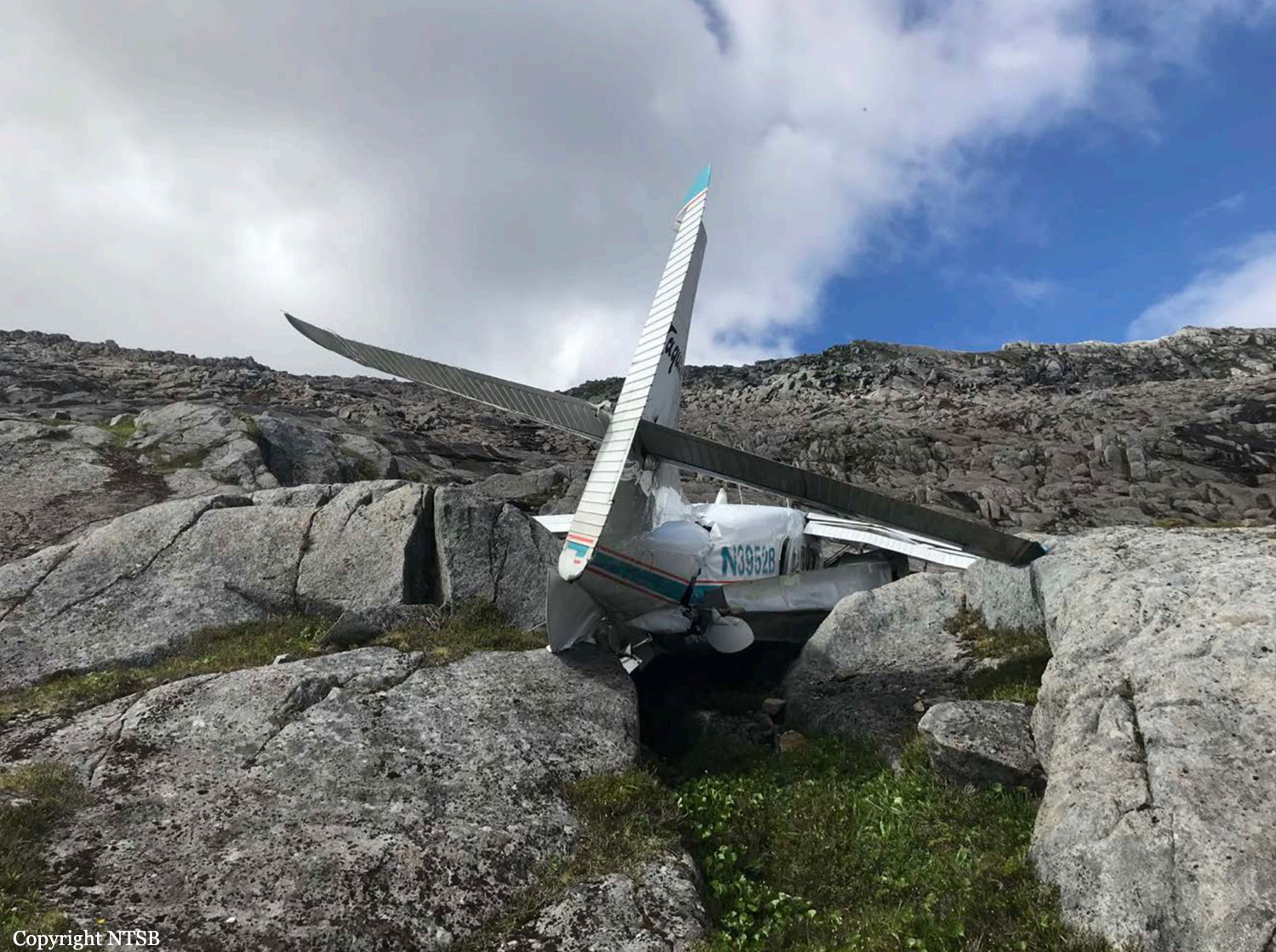Crash of a De Havilland DHC-3 Otter in Pluto Lake
Date & Time:
Oct 13, 2022 at 0929 LT
Registration:
C-FDDX
Survivors:
Yes
Schedule:
Mistissini - Pluto Lake
MSN:
165
YOM:
1956
Crew on board:
1
Crew fatalities:
Pax on board:
0
Pax fatalities:
Other fatalities:
Total fatalities:
0
Captain / Total hours on type:
600.00
Aircraft flight hours:
17489
Circumstances:
On 12 October 2022, the True North Airways Inc. de Havilland DHC-3 Otter aircraft on floats (registration C-FDDX, serial number 165) was conducting a visual flight rules flight, with 1 pilot on board, from Mistissini Water Aerodrome (CSE6), Quebec, to Pluto Lake, Quebec, where it would deliver cargo and pick up passengers. At approximately 0929 Eastern Daylight Time, while manoeuvring for landing on Pluto Lake, the aircraft collided with the surface of the water. The pilot sustained serious injuries. The passengers, who had been waiting near the lake for the aircraft’s arrival, transported the pilot to a nearby cabin from where he was later taken to hospital by a search and rescue helicopter. The emergency locator transmitter activated. There was significant damage to the aircraft.
Probable cause:
3.1 Findings as to causes and contributing factors
These are conditions, acts or safety deficiencies that were found to have caused or contributed to this occurrence.
Due to the visual cues of the landing area that were visible to the pilot, the close proximity of the landing site where passengers were waiting, and the natural tendency to continue a plan under changing conditions, the pilot continued the approach despite visibility in the local area being below the minimum required for visual flight rules flight.
Owing to the reduced visibility, the pilot’s workload, while he was manoeuvring for landing, was high and his attention was focused predominantly outside the aircraft in order to keep the landing area in sight. As a result, a reduction in airspeed went unnoticed.
During the aircraft’s turn from base to final, the increased wing loading, combined with the reduced airspeed, resulted in a stall at an altitude too low to permit recovery.
The pilot was not wearing the shoulder harness while at the controls and operating the aircraft because he found it uncomfortable and other aircraft he flew were not equipped with one. As a result, during impact with the water, the pilot received serious injuries.
3.2 Findings as to risk
These are conditions, unsafe acts or safety deficiencies that were found not to be a factor in this occurrence but could have adverse consequences in future occurrences.
If aircraft stall warning systems do not provide multiple types of alerts warning the pilot of an impending stall, there is an increased risk that a visual stall warning alone will not be salient enough and go undetected when the pilot’s attention is focused outside the aircraft or during periods of high workload.
If aircraft operators do not ensure that their contact information on file with the Canadian Beacon Registry is accurate, there is a risk that search and rescue operations may be delayed.
If companies do not employ robust flight-following procedures, there is a risk that, after an accident, potentially life-saving search and rescue services will be delayed.
3.3 Other findings
These items could enhance safety, resolve an issue of controversy, or provide a data point for future safety studies.
The occurrence aircraft was carrying dangerous goods on board, even though the operator was not authorized to do so on its DHC-3 Otter aircraft.
For unknown reasons, the pilot encountered difficulty inflating his personal flotation device, and because of his proximity to the shore, he removed it to make it easier to swim.
These are conditions, acts or safety deficiencies that were found to have caused or contributed to this occurrence.
Due to the visual cues of the landing area that were visible to the pilot, the close proximity of the landing site where passengers were waiting, and the natural tendency to continue a plan under changing conditions, the pilot continued the approach despite visibility in the local area being below the minimum required for visual flight rules flight.
Owing to the reduced visibility, the pilot’s workload, while he was manoeuvring for landing, was high and his attention was focused predominantly outside the aircraft in order to keep the landing area in sight. As a result, a reduction in airspeed went unnoticed.
During the aircraft’s turn from base to final, the increased wing loading, combined with the reduced airspeed, resulted in a stall at an altitude too low to permit recovery.
The pilot was not wearing the shoulder harness while at the controls and operating the aircraft because he found it uncomfortable and other aircraft he flew were not equipped with one. As a result, during impact with the water, the pilot received serious injuries.
3.2 Findings as to risk
These are conditions, unsafe acts or safety deficiencies that were found not to be a factor in this occurrence but could have adverse consequences in future occurrences.
If aircraft stall warning systems do not provide multiple types of alerts warning the pilot of an impending stall, there is an increased risk that a visual stall warning alone will not be salient enough and go undetected when the pilot’s attention is focused outside the aircraft or during periods of high workload.
If aircraft operators do not ensure that their contact information on file with the Canadian Beacon Registry is accurate, there is a risk that search and rescue operations may be delayed.
If companies do not employ robust flight-following procedures, there is a risk that, after an accident, potentially life-saving search and rescue services will be delayed.
3.3 Other findings
These items could enhance safety, resolve an issue of controversy, or provide a data point for future safety studies.
The occurrence aircraft was carrying dangerous goods on board, even though the operator was not authorized to do so on its DHC-3 Otter aircraft.
For unknown reasons, the pilot encountered difficulty inflating his personal flotation device, and because of his proximity to the shore, he removed it to make it easier to swim.
Final Report:
